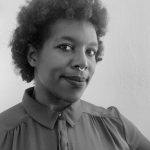Primary Collection (3-D)
The primary three-dimensional collection consists of artifacts significant to the history of Seattle and the Puget Sound region starting at the time of settlement in this area and continuing to the present. There are an estimated 100,000 objects in the 3-D Primary Collection that range in physical size from tiny lapel pins to Boeing’s first airplane, the B-1. Below is an overview of our Collections. For more details, visit the MOHAI Online Collections portal.
Local industry and businesses are heavily represented in the collection covering everything from logging, mining, farming, fishing, shipbuilding, aerospace, urban development, textile working, woodworking, blacksmithing, masonry, milling, biotechnology, software and internet technology, restaurant and hotel service, retail merchandising, photography, printing, banking, tailoring, barbering, butchery, cobblery, millinery, mortuary, smoking and recreational drug use, and other businesses.
Some of the local companies represented in the collection include Boeing, Microsoft, Nordstrom, Bartell Drugs, Frederick & Nelson, Lake Union Dry Dock, Moran Bros., Rainier Brewing Company, Starbucks, Amazon, Eddie Bauer, Filson, ZymoGenetics, Schwabacher, Crescent Foods, Fisher Flour, PACCAR, Wizards of the Coast, REI, Amgen (Immunex), Intellectual Ventures, Seafirst Bank, Washington Mutual, Almond Roca, and Oberto Sausage Company. There is also equipment, tools, and office furniture associated with local services such as medical care, dentistry, public works and transportation, police, fire, and other government services.
Potentially a third of the collection consists of home furnishings and everything associated with family and homelife. This includes furniture, lighting, building and plumbing elements, decorative objects, toiletry items, storage containers, food-service items, toys, games, clocks, and musical instruments.
Another third of the collection consists of clothing, textiles, and fashion accessories that were either handmade or designer-made or purchased from local retailers. This includes dresses, shirts and tops, pants, skirts, shorts, suits, uniforms, ensembles, undergarments, bathing suits, baby clothes, nightwear, coats, sweaters, outdoor wear and gear, hats, shoes, socks, ties, belts, gloves, handkerchiefs and scarves, aprons, canes, fans, parasols, purses, jewelry, watches, eyeglasses, hatpins, hair adornment, linens, quilts, samplers, flags, and other items.
Competitive local sports and recreational activities, represented by equipment and accessories, include baseball, softball, football, basketball, volleyball, soccer, golf, hockey, tennis, roller derby, bowling, frisbees, bike polo, ping pong, archery, hiking, camping, swimming, skiing, sledding, water skiing, mountain climbing, ice skating, roller skating, biking, scuba diving, horseback riding, skateboarding, and others. Some of the sports teams represented include the Rainiers, Pilots, Mariners, Seahawks, Sounders, Reign, Storm, Seattle Totems and Seattle Seahawks hockey teams, Rat City Rollergirls, the University of Washington, and local high school teams. The collection also includes items from the imploded Kingdome stadium and other arenas in the area.
MOHAI’s art collection consists of paintings, sculptures, prints, drawings, etchings, carvings, hairwork, ropework, and other artwork by local artists, and feature people, places, and events of this region. Some of the artists include Kenneth Callahan, Mark Tobey, Fay Chong, Guy Anderson, Harriet Beecher, Emily Inez Denny, Jessie Elliott, Jacob Elshin, Fokko Tadama, Richard Bennett, Kathleen Houlahan, Eustace Zeigler, Doris Chase, John Grade, and glass pieces by Dale Chihuly and Preston Singletary. Works by Indigenous peoples, Native Americans and Alaskan peoples include baskets, totem poles, wooden and ivory carvings, bentwood boxes, rattles, ladles, model canoes, and more contemporary pieces by DeAnn Jacobson, Keith Stevenson, Ty Juvinel, Marvin Oliver, and others. There are also folk-art pieces made by the first European settlers in this area.
For recent MOHAI exhibits, the museum acquired several contemporary items related to Seattle Hip Hop culture, local food and agriculture, Seattle fashion, the South Asian community, and the social justice movement in Seattle.
Specific Seattle families and individuals that are more prominently represented include names such as: Denny, Boren, Terry, Low, Bell, Mercer, Foster, Maple, Chief Si’ahl (Chief Seattle), Kikisoblu (Princess Angeline), Frye, Collins, Bagley, “Doc” Maynard, Henry Yesler, Henry Van Asselt, Bill Boeing, John Nordstrom, Eddie Bauer, and others. More recently, materials have been collected from the families of Rev. Samuel B. McKinney, York and Arlene Luke, and Benjamin McAdoo.
Larger objects consist of vehicles, vessels, aircraft, bicycles, kayaks, canoes, neon signs, and industrial equipment associated with various businesses, restaurants, and local individuals.
Other collections not mentioned above include armament and weaponry, instructional models, and souvenirs.
Read more about accessing MOHAI collections.

